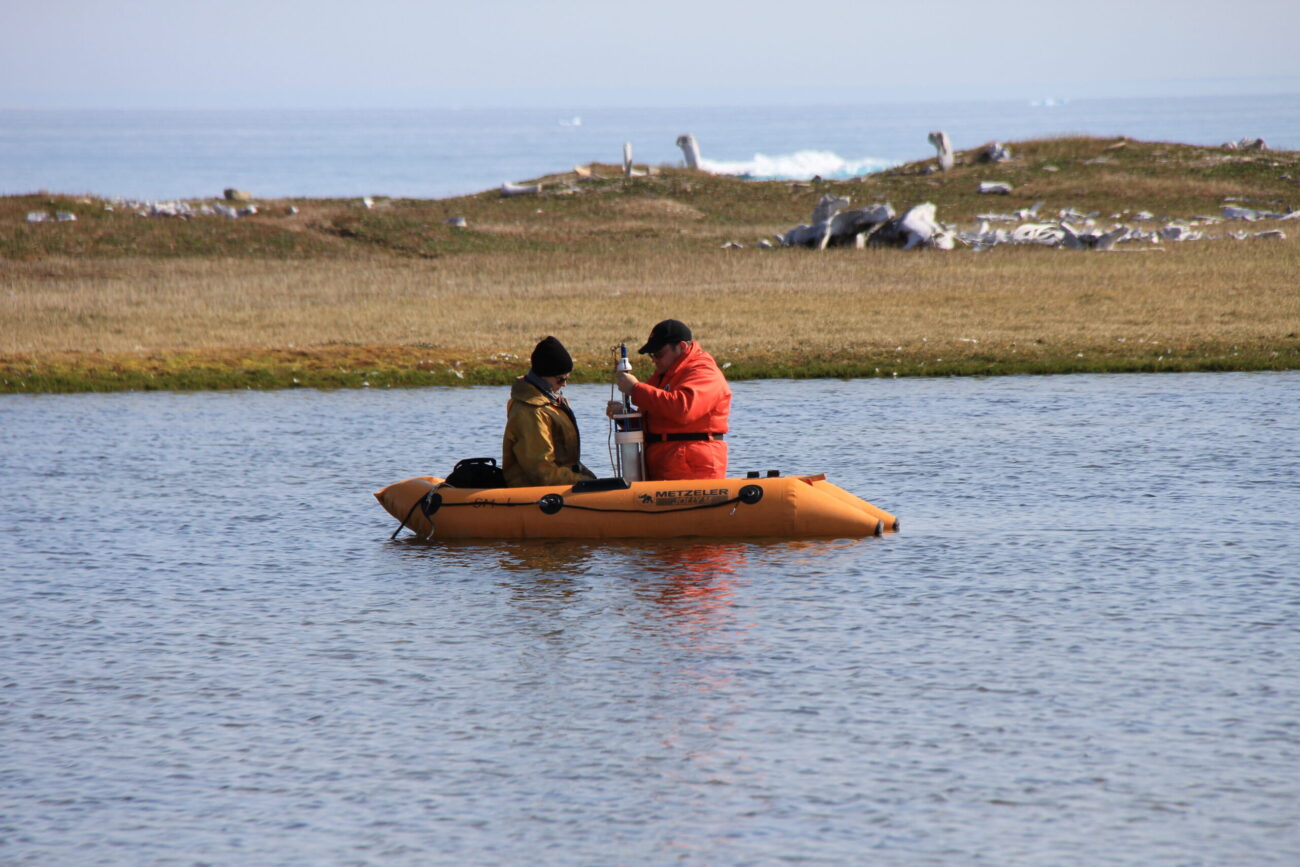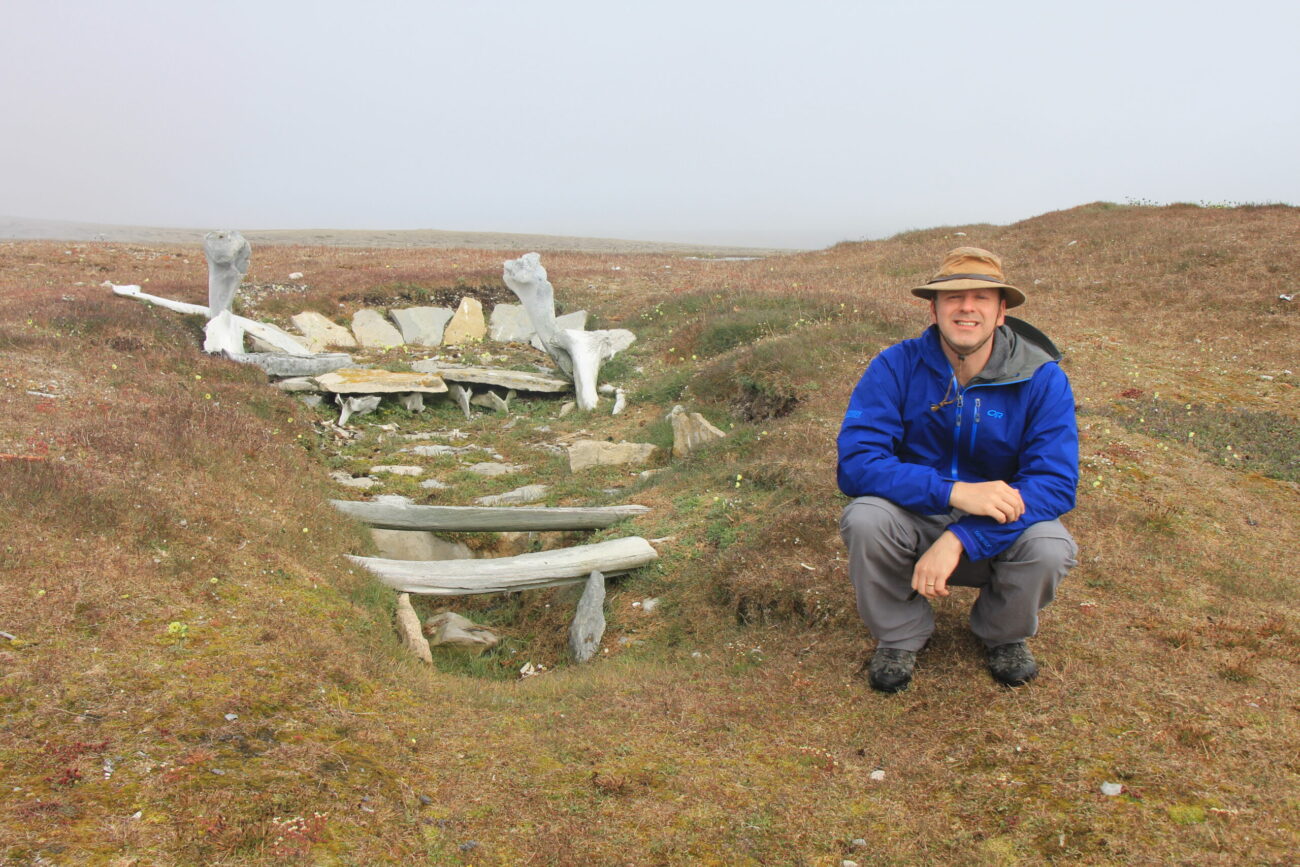TEAM LED BY U OF O RESEARCHERS DATED THE ARRIVAL OF THE THULE TO 1000 YEARS AGO
In a groundbreaking study spanning over two decades, a research team led by U of O faculty has reconstructed the history of the Thule people — the ancestors of modern-day Inuit — and revised the timeline of human occupation of the Arctic.
This study challenges recent claims that placed the arrival of the Thule — also known as Paleo-Inuit — around 800 years ago, proposing instead that their presence in the Arctic dates back approximately 1,000 years.
Research methods
Before this study, documented evidence of Thule arrival in the Arctic was based on artifacts that had been preserved over time, like bones. However, studies were limited by sampling bias: the artifacts that were analyzed may not have been the first ones brought by the Thule.
The diverse research team, which included archaeologists, a lipid specialist, and scientists specializing in a variety of biological markers, analyzed sediment cores from Arctic ponds, focusing on chemical residues from whale fats. This analysis helped reconstruct historical patterns of human activity and environmental conditions, providing insights into how early Arctic inhabitants interacted with their environment.

Human Occupation of the Arctic
The research centres on over 4,000 years of Arctic occupation, particularly in Nunavut’s well-preserved archaeological sites, which offer a rare glimpse into the lives of early Arctic inhabitants, including the Paleo-Inuit. The Thule were distinguished by their advanced whaling technology, which included specialized boats and harpoons, unlike their predecessors who were limited to hunting walrus and seals. The Paleo-Inuit also hunted terrestrial animals as well as marine animals – like caribou and fox.
Around 1500 CE, Paleo-Inuit settlements in the far north were abandoned. Researchers speculate that factors such as the onset of the Little Ice Age and changes in whale migration patterns could have contributed to this abandonment. Post-settlement ecological changes are evident: areas that were once barren transformed as plant life took root, a phenomenon visible even five hundred years after the Thule left.
“It’s actually amazing how well-preserved some of these sites are,” said Jules Blais, a lead researcher on the team and a biology professor at the U of O. “[The Thule] framed their houses with whale bones…you can still see bones jutting out of the ground today.”

Human Migration and Ecological Impact
The Thule, who originated from what is now Siberia, migrated across the Bering Sea into the Arctic. They are part of a circumpolar population that extends across Asia, Greenland, and Canada. Their migration marked a significant shift from the earlier Paleo-Inuit populations, who had dispersed over a vast and harsh environment and eventually disappeared. There is no evidence of genetic mixing between the Paleo-Inuit and the Thule-Inuit, suggesting a distinct transition between these cultures.
The Paleo-Inuit population was sparse and faced challenges during periods of climatic change, such as the Medieval Optimum, when the climate became warmer. Their technology may have been maladapted to the new conditions, contributing to their disappearance. The study highlights how climate change has historically posed crises for populations.
“Climate change is a crisis and we have lots of evidence in the past that populations struggle when the climate changes,” Blais told the Fulcrum.
The study “Sedimentary biomarkers and bone specimens reveal a history of prehistoric occupation on Somerset Island (Arctic Canada)” was published July 9 in the Proceedings of the Royal Society B journal.
Correction: An earlier version of this article used the redundant phrasing “Inuit people,” which has since been corrected to “Inuit.”










